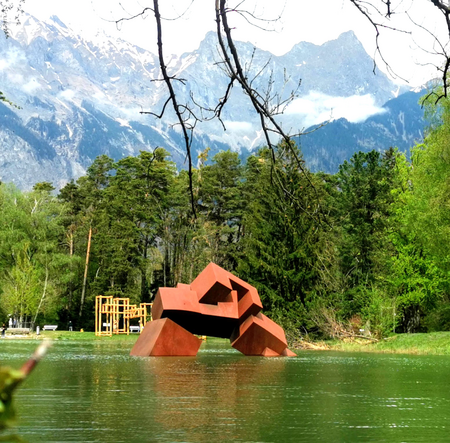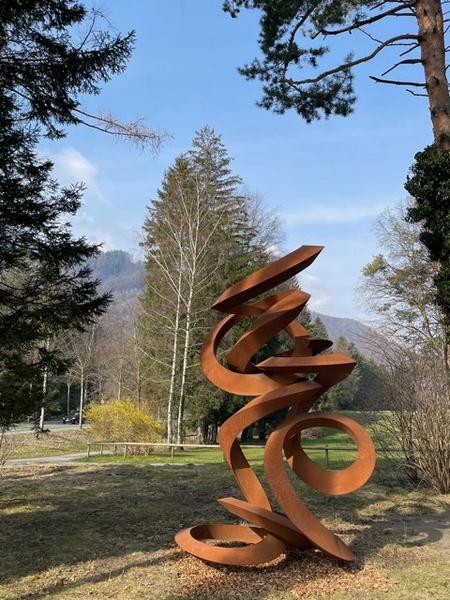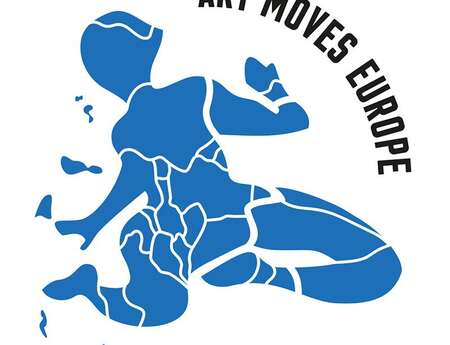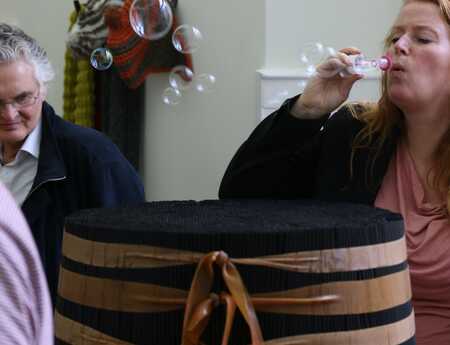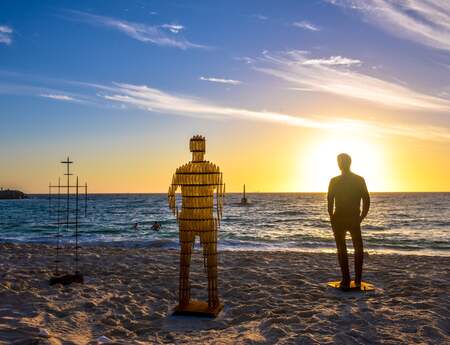8th Bad RagARTz: Europe’s Largest Sculpture Park
Until October 31, the 8th Swiss Triennial of Sculpture takes place in Bad Ragaz and Vaduz, with 400 works of art in the open air. Including works of five sculpture network members.
The Swiss town of Bad Ragaz is an internationally renowned spa center and also the fictional home of Heidi, the heroine in the children’s book by Johanna Spyri. It is a really idyllic location that attracted European nobility and other famous guests since the 18th century, including Victor Hugo and Thomas Mann. Since 2003, also art lovers have flocked to the town thanks to Sculpture Triennial Bad RagARTz, which for six months gives a new face to the health resort transforming it into Europe’s largest Sculpture Park.
From May until October, 83 artists from 16 different countries are part of a unique encounter in the midst of nature. About 400 sculptures are placed in public space: a combination of new discoveries, established artists and big names among whom we are happy to find five sculpture network members. The exhibition is the result of a private initiative: in 2000, Rolf Hohmeister, specialist in rheumatology, orthopedics and pain medicine at the Medical Center in Bad Ragaz and a passionate art collector, founded the Sculpture Triennial Bad RagARTz, together with his wife Esther.
The Triennial Festival of Sculpture is meant to add social value directly to the residential area in a time when values are being destroyed left and right. Art intrudes as a reliable diversion into the daily routine in Bad Ragaz. Art comes at no charge and is presented to the viewer on a silver platter and unfiltered; the financial issues which currently predominate become less of a priority.
Let’s deep into the exhibition and our members:
René Düsel
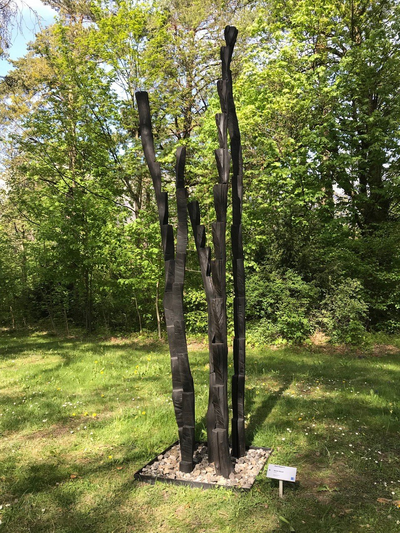
Swiss artist René Düsel wants to connect heaven and earth with his artworks. He carefully selects the woods for his work, because each type of wood has its own structure, a different texture, which he responds to and plays with. For his objects, he looks for the ideal form, pure simplicity and rhythmic structure in the natural materials. Materials that, by using some imagination, allow a variety of possibilities for realization fascinate him. Düsel worked on the grown forms with the chain saw, the angle grinder and the plane and then flamed them with the burner. The cooled surface was additionally impregnated with linseed oil.
Pieter Obels
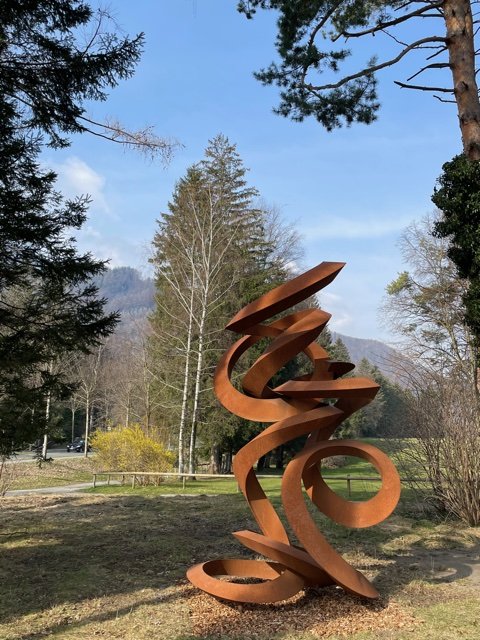
400x200x200cm
Pieter Obels shows two big sculptures at this triennial edition: No strings attached and Inevitable perplexity. In general, his sculptures are a representation of how he experiences nature. He grew up on a farm in the Netherlands and has always been surrounded by nature and plants.
During his education at the art academy, he learned several techniques, and he liked steel (sheet metal) and clay the most. Steel is a strong material with which you can build big constructions, but at the same time it is also quite malleable like clay. Working with steel gives him many possibilities to “build his dreams with great speed”. The sculptures are created organically, there are no sketches or exact plans when he starts to build, just an idea of how it should turn out. He follows the steel, the shapes and bends.
Corten steel tends to rust and gives the shapes a very natural color. It is constantly changing under the influence of the weather, but stays organical.
Jörg Plickat
Plickat’s sculpture Helping Hands, Homage to Humanity was the winner of the NordArt Prize in 2017. At Bad Ragartz, it has been placed in the Lake at the Giessenpark creating a complex landscape picture the components of which are the untouched mountain landscape of the High Alps, the cultural landscape of the park, the reservoir on the former branch of the Rhine and the implanted sculpture – which is reflected in the lake. The very contrasting components unite here to form a spatial-aesthetic composition, both landscape and sculpture appearing quite unusually in a new, almost unreal balance.
The theme is the self-responsible social engagement within a society: “Living together can only work if there is social bridging between the stronger and the weaker,” the artist explained.
Also Plickat works with steel, a material that in this century is used for technical construction, along with concrete. Here, the steel stands in strong contradiction to the surrounding nature, but is able to integrate itself through its almost organic-looking surface.

Vera Röhm
Vera Röhm's sculpture for the 8th Swiss Triennial of Sculpture is an installation of 25 text cubes. They stand in a chequerboard pattern in front of the Grand Hotel Bad Ragaz and display the sentence "Night is the Earth's Shadow" in 25 different languages and scripts. The sentence - a historical quotation by the scholar Johann Leonhard Frisch (1666-1743) - captures an observation that Vera Röhm believes every sighted person can perceive: Evening is growing dark and night is falling.
She presented her first text cubes in 1999. In other works she also explores the wandering shadows by using stereometric bodies, engaging with astronomy, philosophy, geometry and poetry. The cube has a dual role: in its meaning as earth (according to Plato) and in its shape as a night-dark body. Night, shadow and earth form a unity.
In the installation now shown with 25 text cubes, this impression is transformed into diversity and equivalence of all languages in their variation. "I find the multiplicity of languages on the globe with which this sentence can be said astonishing," says the Swiss artist. She uses aluminium and light for the text cubes. The sentence "Night is the Earth's Shadow" is lasered out of the metal.
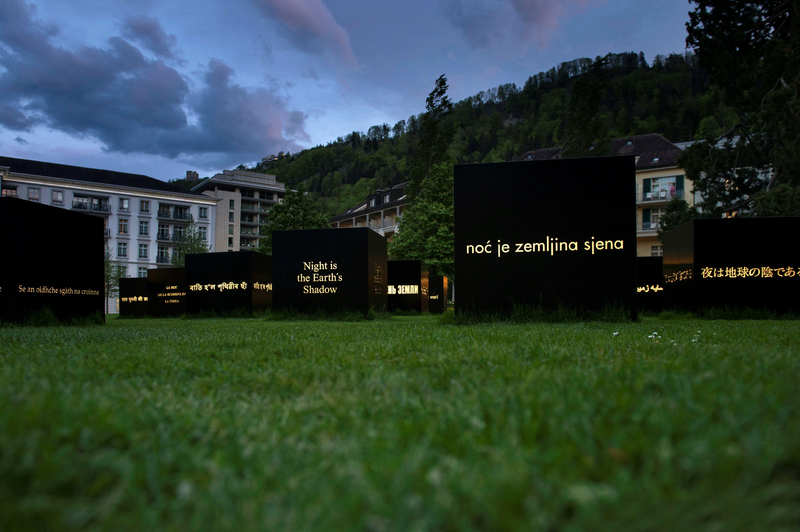
Urs-P. Twellmann
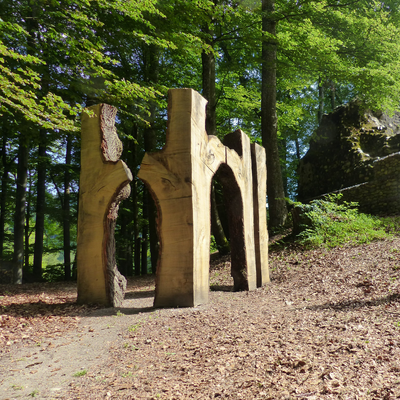
Swiss artist Twellmann is a wood-specialist. At this year’s Triennial he presents Eichen-Passagen. Four pieces of Oak: one trunk made with two cuts with the chain saw. A minimalist approach – more concept than wood sculpture. The artist confessed to us that it was not easy to find a tree that, sawn crosswise, would make more than one archway possible.
All in all, the idyllic town and its parks provide a setting for the art that is more than adequate: we are sure that if the sculptures were allowed to decide, they would never want to leave. In fact, many really have stayed. A special map explains which sculptures are in Bad Ragaz’s permanent collection and which belong to the program of the current Triennial. The exhibition is open daily until October 31 and is free of charge: don’t miss it!
Author: Ilaria Specos
July 2021
Cover picture: Jörg Plickat, Helping Hands, Homage to Humanity. Photo: Fabio Spadin
